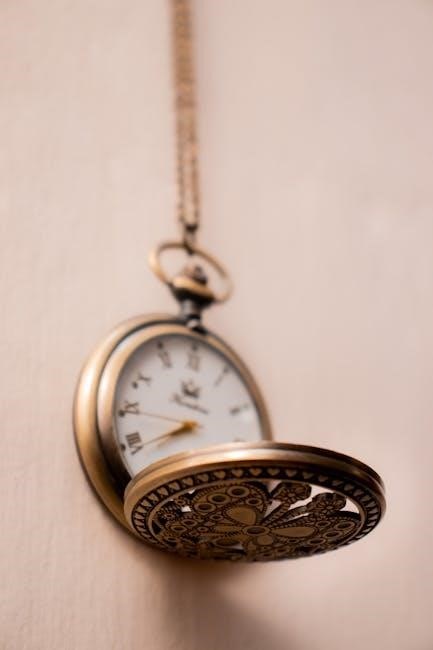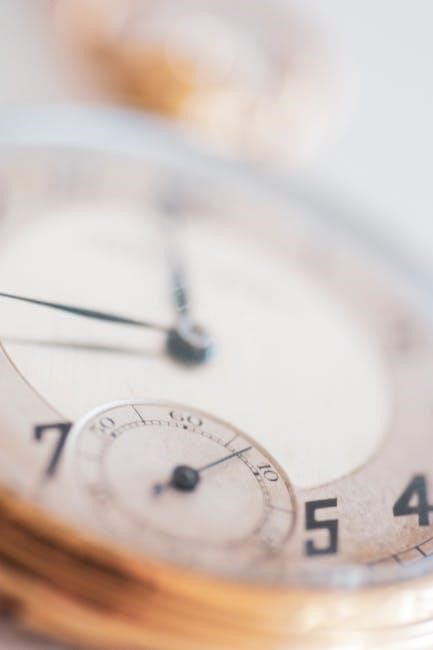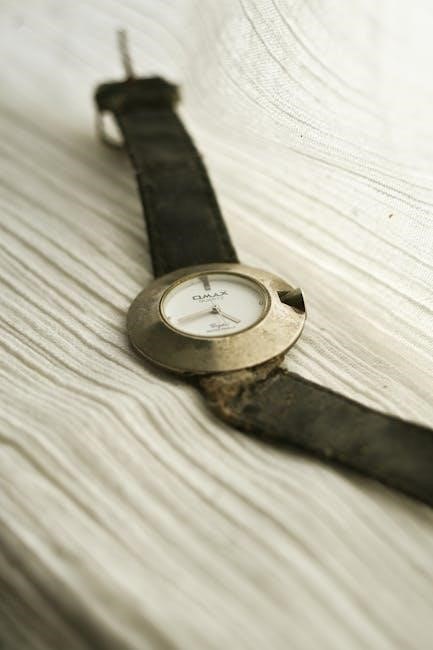A 24-hour urine collection is a diagnostic tool where patients collect all urine produced over 24 hours. It measures substances like protein, hormones, or waste products, aiding in kidney disease, hormone imbalances, or metabolic disorders diagnosis. This comprehensive test provides insights into kidney function and helps monitor chronic conditions effectively, requiring careful instruction adherence for accurate results.
1.1 What is a 24-Hour Urine Collection?
A 24-hour urine collection is a diagnostic procedure where all urine produced by a patient over a 24-hour period is gathered. It involves using a specialized container with preservatives to store the urine. This method ensures accurate measurement of various substances, such as proteins, hormones, and waste products, which can help diagnose conditions like kidney disease, hormonal imbalances, or metabolic disorders. The process requires careful adherence to instructions to ensure reliable results.
1.2 Purpose of the Test
The 24-hour urine collection test is primarily used to assess kidney function, diagnose disorders like kidney disease, and monitor chronic conditions. It measures substances such as protein, creatinine, and electrolytes to evaluate how well the kidneys are filtering waste. This test also helps detect hormonal imbalances, metabolic issues, or abnormalities in urinary excretion. By analyzing a full day’s urine, it provides a comprehensive overview of kidney health and metabolic activity.

What the Test Measures
The 24-hour urine test measures substances like protein, creatinine, hormones, and waste products to assess kidney function and diagnose conditions like kidney disease or metabolic disorders.
2.1 Substances Analyzed
The 24-hour urine test analyzes various substances, including proteins, creatinine, hormones, and waste products, to assess kidney function and metabolic health. Abnormal levels of these substances can indicate conditions such as kidney disease, hormonal imbalances, or metabolic disorders. This test provides essential data for diagnosing and managing these conditions effectively.
2.2 Health Indicators
The 24-hour urine test evaluates key health indicators, such as protein levels, creatinine clearance, and electrolyte balances, to assess kidney function and overall health. Abnormal levels may indicate conditions like kidney disease, diabetes, or metabolic disorders. These indicators help diagnose and monitor diseases, providing insights into how well the kidneys are filtering waste and managing essential nutrients and hormones.

Why a 24-Hour Urine Collection is Important
A 24-hour urine collection is a crucial diagnostic tool for assessing kidney function and detecting conditions like kidney disease or hormone imbalances. It provides a comprehensive evaluation of metabolic activity and waste removal, aiding in early detection and monitoring of chronic health conditions.
3.1 Diagnostic Value
The 24-hour urine collection offers significant diagnostic value by providing a detailed analysis of kidney function and metabolic activity. It measures various substances, such as protein, hormones, and waste products, helping identify conditions like kidney disease, hormonal imbalances, or metabolic disorders. This comprehensive assessment enables early detection of abnormalities and aids in monitoring chronic conditions over time, ensuring accurate diagnoses and effective treatment planning.
3.2 Monitoring Health Conditions
The 24-hour urine collection is a valuable tool for monitoring chronic health conditions, such as kidney disease, diabetes, and hormonal disorders. By analyzing changes in urine composition over time, healthcare providers can assess disease progression and treatment effectiveness. Regular testing helps identify trends, enabling timely adjustments to medications or therapies, and supports long-term management of complex health conditions.

Materials Needed
A large, sterile urine collection container with a tight-fitting lid, labels, and preservation ingredients are required. Additional supplies include gloves, a measuring cup, and written instructions to ensure accurate collection and storage.
4.1 Collection Container
A large, sterile container with a tight-fitting lid is essential for collecting all urine over 24 hours. It should be leak-proof and have graduated markings to measure volume accurately. The container must be free from contaminants and provided by a healthcare professional or lab to ensure suitability for testing. Avoid using household containers, as they may contain substances that could interfere with test results. Proper handling is crucial to maintain sample integrity and accuracy.
4.2 Preservation Ingredients
Preservation ingredients are added to the collection container to maintain sample integrity. Common preservatives include boric acid, sodium hydroxide, or thymol, which prevent bacterial growth and chemical degradation. These ingredients are typically provided by the lab and must be used as instructed. Avoid using household preservatives, as they may interfere with test results. Proper use ensures accurate analysis of substances like hormones, proteins, or waste products in the urine sample.
4.3 Labels and Instructions
Proper labeling and clear instructions are crucial for accurate 24-hour urine collection. Containers must be labeled with the patient’s name, date, and collection start time. Instructions should outline the collection process, including the importance of starting with an empty bladder and collecting all voided urine. Patients should receive detailed guidance on handling, storage, and returning the sample. Adhering to these guidelines ensures reliable test results and avoids sample contamination or invalidation.
Step-by-Step Instructions
A 24-hour urine collection begins with an empty bladder, followed by collecting all urine for 24 hours, and ends with the first void the next day. Adhere to specific instructions for accurate results.
5.1 Preparing for the Test
To prepare, start with an empty bladder in the morning, then collect all urine for 24 hours. Use the provided container and refrigerate samples if not returning immediately. Avoid contamination by using a clean container and washing hands. Complete the collection the next morning at the same time, ensuring all urine is captured. Adhere to timing and storage instructions for accurate results.
5.2 Starting the Collection
Begin by discarding the first morning urine specimen to mark the start. Use the provided container for all subsequent collections. Record the exact start time and date. Collect every drop of urine over the next 24 hours, including the final sample the next morning. Ensure the container is sealed tightly after each use to maintain sterility and accuracy. Timing and completeness are critical for reliable test results.
5.3 During the Collection Period
Collect every drop of urine during the 24-hour period, including the final sample the next morning. Store the container in a cool, dark place or refrigerate to preserve the specimen. Avoid spilling or contamination by handling the container carefully. Do not skip any voidings, as this ensures accurate results. Continue normal activities and hydration but avoid medications or foods that may interfere with test outcomes, as specified in the instructions.
5.4 Completing the Collection
After 24 hours, void the last sample into the container and secure the lid tightly. Label the container with your name, date, and time of completion. Store it in the provided bag or a clean, leak-proof container. Keep it refrigerated until return to the lab. Ensure no urine is spilled or lost, as this could compromise results. Follow instructions precisely for accurate test outcomes and timely analysis.

Handling and Storage
Handle the container carefully to avoid spills. Store the urine sample in a cool, dark place or refrigerate at 2-8°C. Avoid direct sunlight or heat sources.
6.1 Proper Handling Techniques
Wear gloves when handling the urine container to prevent contamination. Keep the container tightly closed when not in use to avoid spills. Ensure the sample remains upright and secure during transport. Avoid shaking or agitating the container, as this could alter test results. Do not add anything to the sample, including preservatives, unless instructed. Always check for leaks before transporting the container to the lab. Proper handling ensures accurate test outcomes and maintains sample integrity.
6.2 Storage Conditions
Store the urine container in a cool, dry place during collection. Avoid direct sunlight and extreme temperatures. Refrigerate the sample at 2–4°C (36–39°F) if not immediately transporting to the lab. Do not freeze the specimen, as this can alter test results. Keep the container tightly sealed to prevent contamination. Ensure the sample is delivered to the lab within 24 hours of collection to maintain accuracy. Proper storage preserves the integrity of the urine sample.

After Completing the Test
After completing the collection, store the sample in a secure container and return it to the lab promptly. Ensure proper labeling and contact the lab for instructions. Wash hands thoroughly after handling the specimen.
7.1 Returning the Sample
After completing the 24-hour urine collection, carefully seal the container and label it with your name, date, and time. Store the sample in a refrigerator or cool place until transport. Use a leak-proof bag to prevent spills. Return the sample to the laboratory within 30 minutes of completion to avoid degradation. Ensure the container is properly closed and labeled to prevent mix-ups. Contact the lab for specific instructions on handling and delivery. Prompt return ensures accurate test results.
7.2 Follow-Up Procedures
After returning the sample, contact your healthcare provider to confirm receipt and discuss next steps. Schedule a follow-up appointment to review test results and their implications. Your provider may recommend additional tests or adjustments to your treatment plan based on the findings. Be prepared to ask questions about your results and any necessary lifestyle changes. Timely follow-up ensures appropriate management of your health condition.

Factors Affecting Test Results
Dietary habits, medications, and hydration levels can influence urine test results. Accurate collection timing and avoiding contaminants ensure reliable data for diagnosing and monitoring health conditions effectively.
8.1 Dietary Influences
Dietary habits significantly impact 24-hour urine test results. Foods high in protein, salt, or certain vitamins can alter levels of substances like creatinine, sodium, and potassium. Caffeine and alcohol consumption may also affect hydration and electrolyte balance. Patients are typically advised to maintain their usual diet during the collection period unless specified otherwise to ensure accurate and reliable test outcomes for proper diagnosis and monitoring of health conditions.
8.2 Medications and Supplements
Certain medications and supplements can influence 24-hour urine test results. Diuretics may increase urine volume, while steroids, NSAIDs, and antihypertensives can affect specific analytes like protein or electrolytes. Patients should inform their healthcare provider about all medications and supplements being taken, as some may need to be temporarily discontinued or adjusted to ensure accurate test outcomes. This step is crucial for obtaining reliable diagnostic results.
8.3 Timing and Hydration
Timing and hydration are critical for accurate 24-hour urine collection results. Patients should start the collection in the morning and complete it exactly 24 hours later. Proper hydration is essential, but excessive fluid intake may dilute the sample. Avoiding dehydration ensures concentrated urine for precise analyte measurement. Adhering to the timeline and hydration guidelines helps maintain test accuracy and reliability for diagnostic purposes.

Common Mistakes to Avoid
Common mistakes include forgetting to collect all urine, missing the 24-hour timeline, improper storage, and using the wrong container. Avoid these to ensure accurate results.
9.1 Contamination Risks
Contamination risks in 24-hour urine collection include bacterial growth from improper handling or unsterile containers. Failure to clean the genital area or using non-sterile containers can introduce bacteria, leading to inaccurate results. Proper hygiene, sterile equipment, and immediate refrigeration are essential to prevent contamination and ensure reliable test outcomes for accurate diagnosis and treatment planning.
9.2 Incomplete Collection
Incomplete collection is a common mistake, where patients forget to collect all urine samples or fail to follow the 24-hour timeframe. This can lead to inaccurate test results, as the sample may not fully represent kidney function or metabolic activity. Ensuring every voiding is collected and adhering strictly to the timeline is crucial for reliable diagnostic outcomes. Proper patient instruction and reminders can help avoid this issue.
Interpreting Test Results
Interpreting 24-hour urine test results involves comparing measured values to normal ranges, identifying abnormalities, and correlating findings with clinical symptoms. Accurate interpretation requires a healthcare professional.
10.1 Understanding Abnormal Results
Abnormal results in a 24-hour urine test indicate levels of substances like protein, glucose, or hormones outside normal ranges. Elevated protein may suggest kidney damage, while excessive glucose could signal uncontrolled diabetes. Low or high creatinine levels may point to kidney dysfunction. Abnormal findings require further evaluation by a healthcare provider to diagnose conditions such as kidney disease, metabolic disorders, or hormonal imbalances. Consultation is crucial for accurate interpretation and appropriate treatment planning.
10.2 Normal Ranges and Variations
Normal 24-hour urine test results vary based on factors like age, sex, and overall health. Creatinine levels typically range from 0.8 to 1.2 grams/day for women and 1.2 to 1.4 grams/day for men. Protein levels are usually below 150 mg/day. Electrolytes like sodium and potassium also have specific ranges. Variations may occur due to diet, hydration, or lab methods, but significant deviations often warrant further medical evaluation.

When to Consult a Healthcare Provider
Consult a healthcare provider if results are abnormal, if symptoms persist, or if concerns arise about the collection process or interpretation of results.
11.1 Abnormal Results
Abnormal results may indicate underlying health issues, such as kidney disease, hormonal imbalances, or metabolic disorders. Elevated levels of protein, glucose, or waste products like creatinine can signal potential problems. If results fall outside normal ranges, consult your healthcare provider for interpretation and further evaluation. They will determine the next steps, which may include additional tests or treatments tailored to your condition.
11.2 Concerns or Questions
If you have concerns or questions about your 24-hour urine collection results, discuss them with your healthcare provider. They can explain abnormalities, address worries about accuracy, and recommend next steps. It’s important to seek clarification on any unclear aspects to ensure proper understanding and necessary follow-up care. Your provider is equipped to address all your concerns and guide further management if needed.
A 24-hour urine collection is a vital diagnostic tool for assessing kidney function and metabolic health. Adhering to instructions ensures accurate results, aiding in effective disease management and monitoring.
12.1 Summary of Importance
A 24-hour urine collection is a crucial diagnostic tool for assessing kidney function, hormone levels, and metabolic health; It provides detailed insights into how the body processes waste and nutrients, aiding in the early detection of kidney disease, hormone imbalances, and metabolic disorders. Accurate test results help guide treatment decisions, making it an essential procedure for maintaining long-term health and managing chronic conditions effectively.
12.2 Final Tips
For accurate results, start with an empty bladder, use the provided container, and avoid contamination. Label the container with your name, date, and time. Store the sample in the refrigerator during collection. Complete the 24-hour cycle precisely, including the final void. Follow instructions carefully to ensure reliable test outcomes and effective medical evaluation. Consult your healthcare provider if you have any questions or concerns.

Additional Resources
For further reading, refer to instructional guides on 24-hour urine collection from medical websites or download PDFs with detailed step-by-step instructions and patient guidelines online.
13.1 Related Materials
Access detailed guides, instructional PDFs, and clinical resources online to supplement your understanding of 24-hour urine collection. These materials include step-by-step instructions, diagrams, and troubleshooting tips. Many healthcare providers offer downloadable PDFs with visual aids and checklists. Additionally, medical websites and educational platforms provide supplementary information on specimen handling, storage, and common mistakes to avoid. These resources ensure comprehensive preparation and adherence to proper collection protocols for accurate test results.
13.2 Further Reading
For deeper insights, explore medical journals, textbooks, and online courses focusing on urinalysis and renal function. Reputable sources include the American Journal of Kidney Diseases and Clinical Chemistry. Websites like the National Kidney Foundation and LabTestsOnline.org offer detailed explanations. Additionally, textbooks on clinical nephrology provide comprehensive overviews of urine collection methodologies and interpretations, while online courses offer hands-on training for healthcare professionals.